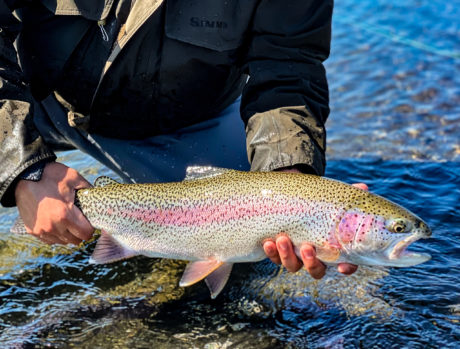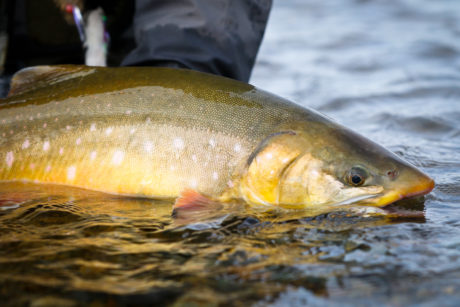
When purchasing fly rods, conventional wisdom says if you have a 5 weight, your next rod should be a 7 weight, then a 9 weight for really big fish. Or if you have a six weight, you should get a 4 weight and an 8 weight. You know, skip a number, because if you have a 5 weight, you don’t need a 4 weight or a six weight. It’s conventional wisdom. But is that really true?
Currently, the most popular single-handed rod in the world is a 9′ 5 weight. The 9′ 5 weight has widely become the unofficial industry standard. Is it effective? Sure it is. When all the world’s best fly rod manufacturers try to perfect the 9′ 5 weight to rule the fly rod world, you know that particular size has merit. However, is it possible that the 9′ 5 weight isn’t the most effective or even efficient fly rod?

Have we settled for the 9′ 5 weight? Do convention and popularity always prescribe a 9′ 5 weight because it is actually the best rod? 9′ 5 weights are great rods. Just ask the many people who own and fish them. Today we throw convention and popular thinking out the window. Today we’re just going to have some fun and make an excellent argument about why you should bridge the gap with the six-weight fly rod regardless of what rods you currently have and how it should be the most popular sized fly rod because of its versatility and capability. Let’s get started.

A six weight is more Versatile than a 5 weight. A six-weight fly rod’s range of flies trumps the versatility range of its 5 weight counterpart. From small dry flies with the proper tippet all the way to streamers and weighted flies, a six-weight can handle it all, with grace and dignity. Just look at the fly line range on a six weight. You have plenty of standard options for six weight fly lines, but you also have specialized and custom taper lines for a variety of fish species. A six weight fly rod can not only lay down a delicate dry fly presentation but also wrangle larger trout while in rodeo.
A six weight is More Capable than a 5 weight. A six weight can handle smaller fish and manage much larger fish than a 5 weight. Although the 5 weight does go slightly smaller within the dry fly spectrum, it can’t compete with the six weight in its ability to cast larger streamers or weighted flies, which allows for a greater range of fish and size of fish. A six weight is also more capable than a 5 weight in less than ideal, windy conditions which, happens a lot. For a hot minute catching the biggest fish on the lightest rod was a thing. Nowadays, the time a fish strikes, to fight with the fish, till the time the fish is landed and released, you want to make that as quick as possible. A six weight is better capable than a 5 weight on any fish.
A Fighting butt and a Full Wells Grip on 5 weight fly rods are very, very, very hard to find. Since a six weight can be used for bigger fish, a six weight typically comes standard. Although, nowadays, you can also find a six weight sans fighting butt. Regardless, when you’re trying to crank on a larger fish and keep them out of the root wad, a six weight with a fighting butt and a full wells grip will give you that leverage.
Don’t get it wrong. A 5 weight is a great rod. It just has limitations that six weight overcomes with very minimal sacrifice. A six weight has more ‘umph’ and makes more sense in more situations. If you’re thinking about purchasing a fly rod, consider a six weight to bridge the gap in your arsenal if you don’t already have one, regardless of what series of weights you currently have. Conventional wisdom should be heard and appreciated. With that said, as modern fly anglers, we should have an open mind and not get stuck in convention or popular belief. Try things on your own, step out of the matrix, and you may experience both better success and enjoyment.
Other Things To Consider.
Leave a Reply